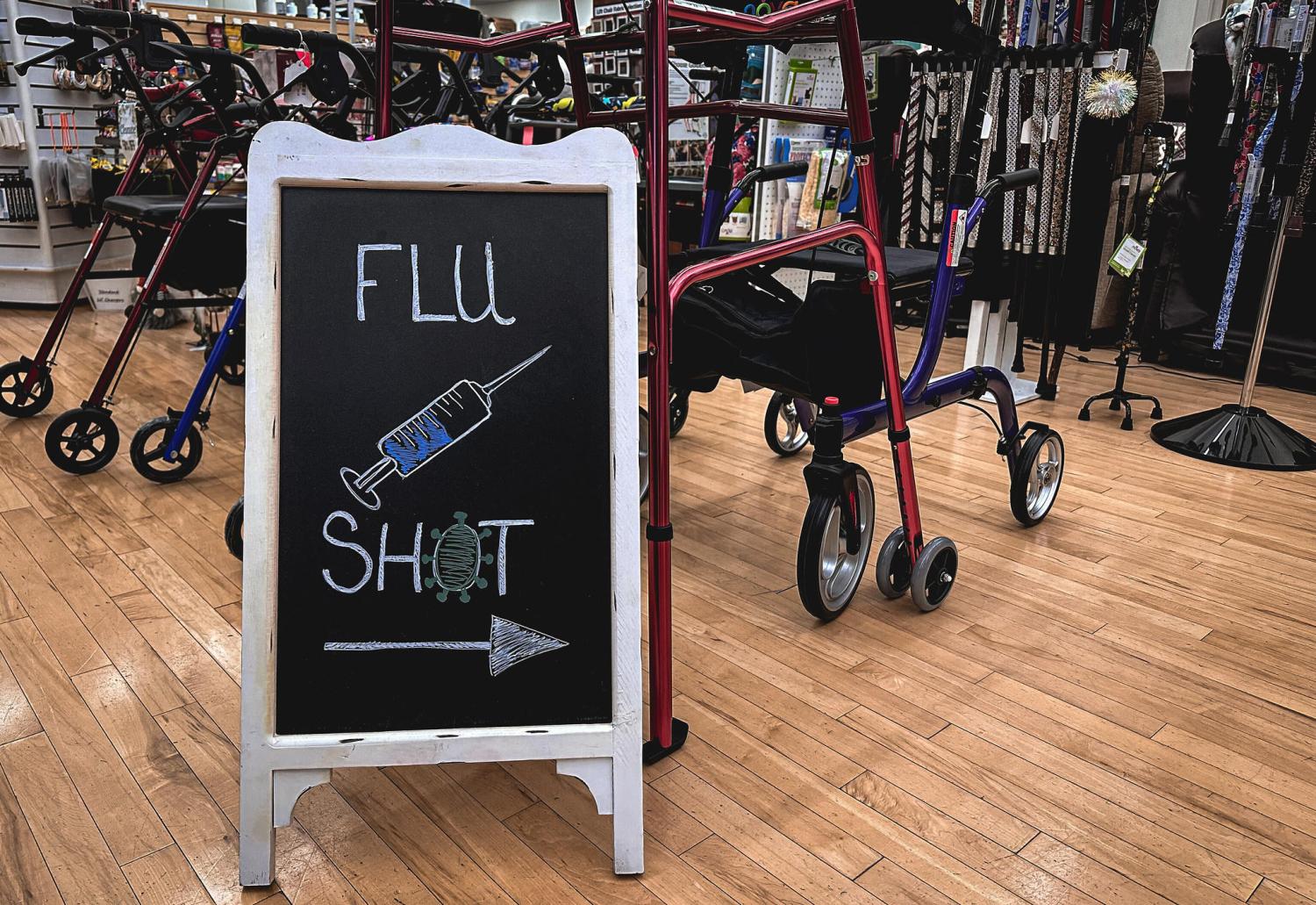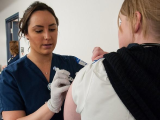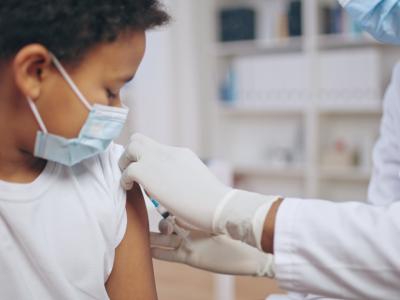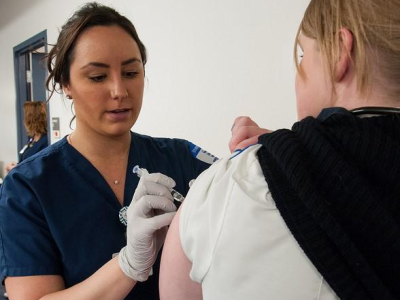In the United States, influenza vaccine effectiveness (VE) was similar in pregnant and nonpregnant women of reproductive age, respectively, in the 2023-24 season, and the MF59-adjuvanted and high-dose quadrivalent inactivated flu vaccines were likewise comparably effective in older adults in any setting in 2022-23, two new studies conclude.
Both vaccines similarly effective against poor outcomes
For the first study, published in Vaccine, a Centers for Disease Control and Prevention (CDC)-led team used data from seven US healthcare systems and a test-negative, case-control design to estimate the VE of the 2023–24 flu vaccine against related emergency department/urgent care (ED/UC) visits by pregnant and nonpregnant women aged 18 to 49 years from October 2023 to April 2024.
The median age was 30 years in pregnant women and 33 years in nonpregnant women. Most pregnant and nonpregnant women were White (41.9% and 46.7%, respectively) or Hispanic (34.2% and 29.3%, respectively). Overall, 13.6% of pregnant and 19.6% of nonpregnant women had at least one chronic condition.
The median gestational age at the ED/UC visit was 19 weeks. Among vaccinated pregnant women, 23.7% were vaccinated before pregnancy, while 41.9% were vaccinated in the first trimester, 30.4% in the second trimester, and 4.1 % in the third trimester.
The researchers noted that the Advisory Committee on Immunization Practices (ACIP) recommends the flu vaccine at any time during pregnancy for women who are or could become pregnant or postpartum during the respiratory virus season.
VE was similar for pregnant women who received influenza vaccination during pre-pregnancy or at ≤13 weeks gestation compared with those vaccinated at >13 weeks gestation.
"Influenza virus infection in pregnancy may be associated with adverse perinatal outcomes, including preterm birth, small for gestational age, low birth weight, and fetal loss," they wrote. "Because infants are ineligible for influenza vaccination until 6 months of age, maternal vaccination provides the primary antibody protection against influenza during the first few months after birth."
Of 61,248 ED/UC visits, 24.6% resulted in a positive influenza test, and 15.7% of flu-positive patients were vaccinated, compared with 27.5% flu-negative controls. In total, 5.8% of visits were by pregnant women, and 94.2% involved non-pregnant women.
Among the 3,538 pregnant women, VE against flu-related ED/UC visits was 46% (95% confidence interval [CI], 36% to 55%) and did not differ by gestational age at vaccination. For the 57,709 nonpregnant women, VE against flu-related ED/UC visits was 54% (95 % CI, 51% to 56%).
"The 2023–2024 influenza vaccine provided similar protection against influenza-associated ED/UC encounters among pregnant and non-pregnant women, reducing the likelihood of ED/UC encounters by about half," the study authors wrote. "VE was similar for pregnant women who received influenza vaccination during pre-pregnancy or at ≤13 weeks gestation compared with those vaccinated at >13 weeks gestation."
Comparable protection against severe flu
The second study, published in the International Journal of Infectious Diseases, was led by scientists from CSL Seqirus, which manufactures the MF59-adjuvanted flu vaccine.
The research team used a retrospective, test-negative design and electronic health records and claims data to estimate VE against flu infection among adults aged 65 years or older who received the adjuvanted quadrivalent (four-strain) flu vaccine (aQIV) or the high-dose quadrivalent inactivated flu vaccine (HD-QIV) by setting from October 2022 to May 2023.
Similar to previous studies, aQIV and HD-QIV provided comparable protection against test-confirmed influenza in any setting, including ED/inpatient, aligning with ACIP and other recommendations for adults ≥65 years.
The average participant age was 76.7 years, and most were White women.
Older adults are especially susceptible to flu and have the highest rates of related complications, hospitalization, and death. While yearly flu vaccines are recommended, older people typically mount weaker immune responses to standard flu vaccines—a phenomenon called immunosenescence, the study authors noted.
"Strategies developed to address the impact of immunosenescence on the response to vaccination include the addition of vaccine adjuvants, which boost antibody responses relative to standard vaccines, as well as high-dose vaccines containing up to four times the standard dose of influenza antigens," they wrote.
A total of 2,361 older adults were tested for flu, and 28,550 served as controls; 55% were tested for flu at hospitalization or an ED visit. Of all participants, 31.8% received aQIV and 68.2% received HD-QIV.
In any setting, 7.2% of aQIV and 7.9% of HD-QIV recipients tested positive for flu. In the ED/hospital setting, 5.6% of aQIV and 6.2% of HD-QIV recipients had flu. The relative VE (rVE) of aQIV versus HD-QIV was –2.5% (95% CI, –13.4% to 7.4%) in any setting and 0.0% (95% CI, –15.9% to 13.7%) in EDs/hospitals.
"Similar to previous studies, aQIV and HD-QIV provided comparable protection against test-confirmed influenza in any setting, including ED/inpatient, aligning with ACIP and other recommendations for adults ≥65 years," the researchers concluded.



















